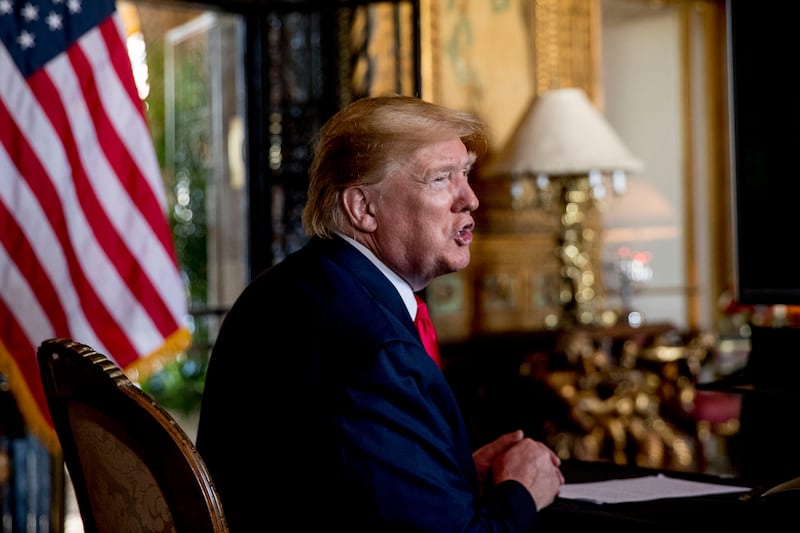President Donald Trump authorized a drone strike early Friday that killed Maj. Gen. Qassim Soleimani, who is one of Iran’s top security and intelligence commanders, igniting concerns and worry from world leaders that the world has become more dangerous, according to The Associated Press.
What happened: Trump authorized the drone strike early Friday that killed Soleimani, who was the leader of the Quds Force of the Islamic Revolution Guards Gorps.
- The American MQ-9 Reaper drone fired missiles into a convoy — which included several military officials of Iraq — as they were leaving a Baghdad airport. The strike killed Soleimani.
- According to the Pentagon: “At the direction of the President, the U.S. military has taken decisive defensive action to protect U.S. personnel abroad by killing Qasem Soleimani, the head of the Islamic Revolutionary Guard Corps-Quds Force, a U.S.-designated Foreign Terrorist Organization.”
- The United States reportedly issued the attack after receiving intelligence that Iran planned to put American lives at risk.
- U.S. Secretary of State Mike Pompeo told CNN that the move ended an “imminent” attack in the region. He did not give any further details.
Who is Soleimani?: The commander led many of the military operations from Iran over the past 20 years or so, according to The New York Times.
- The Pentagon said Soleimani and the Quds Force attacked bases in Iraq over the past few months, including an attack on Dec. 27 that killed an American contractor, according to CNN.
- Soleimani reportedly orchestrated the Dec. 31 U.S. embassy attack in Baghdad, according to CNN.
What does this mean?: The attack represents “a serious escalation of Mr. Trump’s growing confrontation with Tehran, one that began with the death of an American contractor in Iraq in late December,” The New York Times reports.
- According to reporter Yashar Ali, the killing of Soleimani is “not just a moment in US-Iran relations, but a major global event. People comparing this to killing Osama Bin Laden don’t know what they’re talking about. This is way more significant. Equivalent to another country killing US Vice-President.”
- Philip Gordon, the former White House coordinator for the Middle East and the Persian Gulf in the Obama administration, told BBC News that the attack was just short of a full “declaration of war” by the U.S. against Iran.
- Rep. Chris Stewart, R-Utah, said this morning on KSL radio: “We’re not looking for an escalation. We’re not looking for a conflict with Iranian leadership. We don’t want to have a conflict with the Iranian people. We want to defend America’s interests and American lives in the region.”
The response: Iran’s supreme leader, Ayatollah Ali Khamenei, sent out a statement calling for the mourning of the lost commander. Iran also promised a response to the attack, according to Vox.
- The statement reads: “His departure to God does not end his path or his mission, but a forceful revenge awaits the criminals who have his blood and the blood of the other martyrs last night on their hands.”
- Iranian President Hassan Rouhani statement (via Reuters): “Soleimani’s martyrdom will make Iran more decisive to resist America’s expansionism and to defend our Islamic values. With no doubt, Iran and other freedom-seeking countries in the region will take his revenge.”
What’s next: The United States has braced for potential response attacks from Iran. Per Axios, White House officials consider cyberattacks and terrorism to be the focus of any retaliation.
- The State Department has asked all Americans to leave Iraq.
- Iran announced that Esmail Qaani will replace Soleimani as the new head of the Quds Force, according to AFP.
- Per BBC News: “The US and its allies will be looking to their defences. Washington has already despatched a small number of reinforcements to its embassy in Baghdad. It will have plans to increase its military footprint in the region quickly if needed. But it is equally possible that Iran’s response will be in some sense asymmetric - in other words not just a strike for a strike. It may seek to play on the widespread support it has in the region - through the very proxies that Soleimani built up and funded.”


